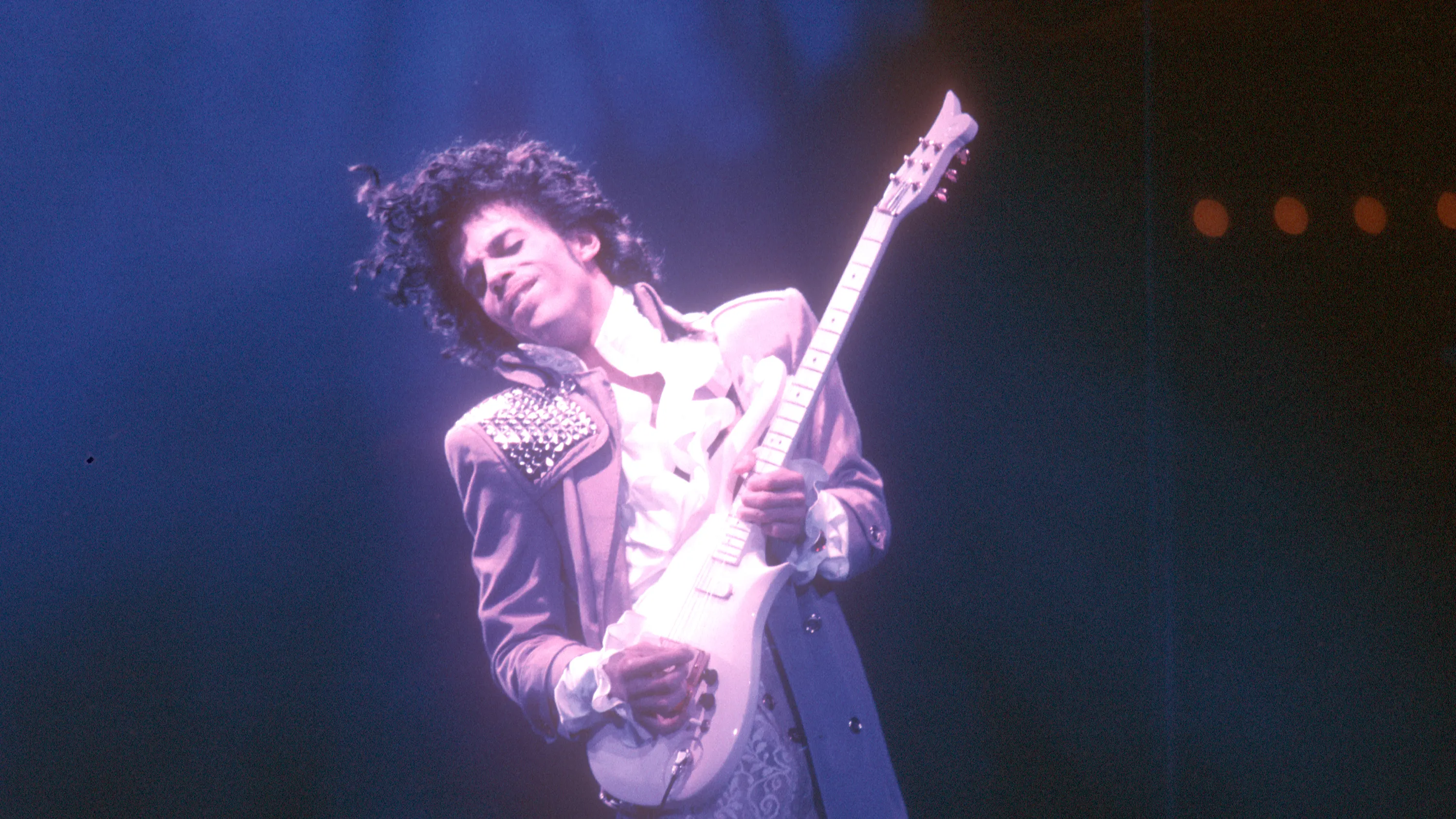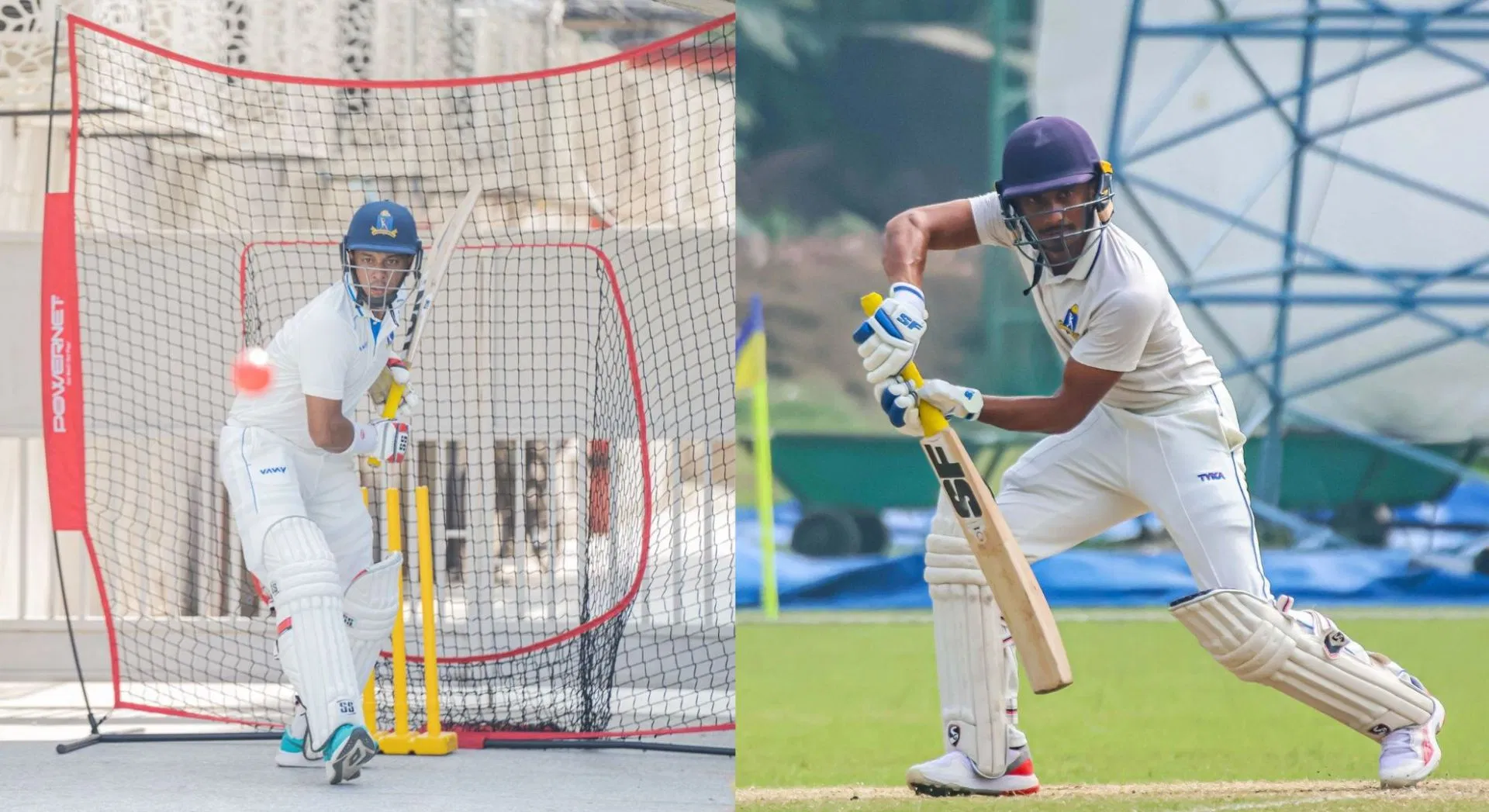Copyright gq

The 1980s might be the easiest decade to caricature. But the best ’80s albums prove that the decade wasn't just about big hair, big shoulder pads, and even bigger mobile phones—and that the era's music didn't begin and end with drum machines and synthesizer sounds polished to antiseptic perfection in the studio. The glossy surface of ’80s music is eggshell-thin, and underneath you’ll find a much darker, diverse and more interesting musical era. While superstars like Madonna and Michael Jackson ruled MTV, politically charged hip-hop acts like Public Enemy and N.W.A. were erupting into the mainstream. Genres like techno and post-punk were building steam. There was a lot going on— and here are the 20 best ’80s albums that prove it. Guns N’ Roses, Appetite for Destruction (1987) We now think of Guns N’ Roses as just another huge heritage band touring the world’s arenas, or a symbol of rock excess thanks to their budget-busting Use Your Illusion albums and the runaway production that was Chinese Democracy. But in the beginning, they were lean and mean. Appetite for Destruction, their razor-sharp debut album, followed years of the various band members honing their chops in Los Angeles rock clubs, and it shows. Crossover hits like “Sweet Child o’ Mine” and “Paradise City” get a lot of attention, but songs like “Mr Brownstone” and “Nightrain” show they also had riffs and grooves for days. Nowhere else is the interplay between Axl Rose’s whiskey-soaked wail and Slash’s liquid lead guitar as immediate as it is here. Tom Waits, Swordfishtrombones (1983) By the early ’80s, Tom Waits was a well-established singer-songwriter with a penchant for turning his pen to the more sordid corners of American life. But after meeting and marrying his wife and collaborator Kathleen Brennan, he threw musical traditionalism out the window with Swordfishtrombones, an album just as bizarre as its title. Waits almost howls rather than sings; traditional instruments are replaced with a menagerie of accordions, bagpipes and marimbas. He hasn't lost his ear for a tune—“In the Neighborhood” is gruffly beautiful—but the melodies come in new, thrilling forms. Paul Simon, Graceland (1986) Graceland is an album of its time partly because of the political circumstances around its creation. Paul Simon broke the cultural boycott of South Africa’s apartheid regime to travel to the country and record with its top Black musicians. The result was an album that sold millions of copies and introduced international sounds to a Western audience. Though Simon’s boycott-breaking was controversial then and now, it’s hard to argue with the magic of the music itself: the likes of “I Know What I Know” and “You Can Call Me Al” are utterly infectious while also showing off intelligent, witty songwriting. De La Soul, 3 Feet High and Rising (1989) The cartoon flowers on the cover of De La Soul’s 3 Feet High and Rising speak to the trio’s hippy-ish concept of “the DAISY Age” and hint at the content within—rap songs that are funny, thoughtful and psychedelic, sometimes all at once. Production by Prince Paul, who crammed the album with samples from Steely Dan, Johnny Cash and more, rounded out the show. This off-kilter album became the blueprint for “conscious” rap. And it still holds up today, with bouncy tunes like “Me Myself and I,” “Say No Go,” and “Eye Know,” still possibly the most charming love song in hip-hop. Laurie Anderson, Big Science (1982) Laurie Anderson was, and still is, more of an artist than a musician. But the lead single from Big Science, her 1982 debut, reached number two on the UK singles chart—which for an eight-minute experimental piece built around vocal loops, was pretty impressive. The album itself has a similar avant-garde spirit, with chanting, speak-singing and synthesizers jutting up against trombones and bassoons. Anderson’s use of the vocoder pointed the way to the sound of AutoTune becoming ubiquitous in pop decades later. The Beastie Boys, Paul’s Boutique (1989) By 1989, and one record in, the Beastie Boys had been all but dismissed as frat-boy hip-hop one-hit wonders. Then came Paul’s Boutique, the album where they reinvented themselves and delivered a masterpiece that showed they were the real deal—and took the art of sampling to the next level. Produced by the Dust Brothers, the album samples over 100 different songs (including 24 individual samples on the last track alone), taking in everything from The Beatles to James Brown, to Joni Mitchell and The Ramones. It could have been a mess but it all hung together beautifully, with some of the strongest rhymes Mike D, MCA and Ad-Rock ever produced. It wasn't a hit, but it laid the foundations for the next phase of their career, and helped plot a course for so many artists to come. Janet Jackson, Control (1986) The title says it all: this was Janet Jackson’s statement of independence. Two albums in and just 19, she decided to fire her father as manager and teamed up with Prince collaborators Jimmy Jam & Terry Lewis. They created kinetic, industrial and aggressive beats to back up Janet’s declarations of independence as she put the world to rights; just listen to the crunch of “Nasty” and the funk of “What Have You Done For Me Lately” to understand how undeniable it all felt. It made Control a landmark, ahead-of-its-time record that even now manages to straddle both the past and the future. The Smiths, The Queen Is Dead (1986) Forget what would come later—The Queen Is Dead is when The Smiths finally became as good as Morrissey always believed them to be. This was the moment everything crystalized: his lyrics at their most deftly poetic and devastatingly and achingly moving (just go and listen to “I Know It’s Over” again now for proof of the latter) and Johnny Marr’s guitar at its most effervescent. For all the jangle of their sound, the title track was the toughest and belligerent they would ever be, while “There Is A Light Never Goes Out” remains joyfully melancholic in a way only the Smiths could ever be. It remains an enduring testament to England in the ’80s. Kraftwerk, Computer World (1981) Released at the start of the 1980s when the World Wide Web was not even a twinkle in Tim Berners-Lee’s eye, Computer World, was a visionary album, from the prophetic title on in. It not only foresaw the musical and cultural shifts of the coming years, it also helped pave the way for electro and hip-hop; whether that’s the synth-pop of the ’80s or the techno innovations of Derrick May. It would go to be sampled everywhere, most notably on Afrika Bambaataa and Soulsonic Force’s “Planet Rock,” cementing the German group’s place in hip-hop history. But this was not just a technological prophecy: the songs here are enough on their own: packed with crystalline synth melodies and Moroder-like disco grooves. This is where the future began. Sonic Youth, Daydream Nation (1988) It’s hard to overstate Daydream Nation’s importance really. It’s a record that marked a new era for alternative rock, but, more than that, it helped shape the notion of what American indie rock meant. That’s because it took all the disparate strands—college rock, hardcore punk, avant-garde—and sewed them together into a double-album magnum opus. The group’s three songwriters—Thurston Moore, Kim Gordon and Lee Ranaldo—were at their peak here, beginning with “Teen Age Riot,” the poppiest song in their arsenal, whose early working title was “J Mascis for President.” The album’s influence was so vast that whole genres grew in its footprint; Kurt Cobain said it was one of his favorite albums of all time and Dave Grohl has said that when he initially wrote “Everlong,” he was so paranoid that he’d ripped off “Teen Age Riot,” he had to check with Moore and Gordon to see if it was OK. N.W.A., Straight Outta Compton (1988) N.W.A. and Straight Outta Compton changed hip-hop forever. “You are now about to witness the strength of street knowledge” are the first words you hear, kicking off an album that takes no prisoners. Opening with “Straight Outta Compton,” “Fuck tha Police,” and “Gangsta Gangsta,” this was a debut record that was unsparing and defiant, a commercial juggernaut whose impact rippled out into pop culture and politics. Their songs were vivid portraits of the violence, brutality and racism experienced by Black America, which also makes them—unfortunately—timeless; “Fuck Tha Police” could easily be just as resonant if it was released today. N.W.A. might not have invented gangsta rap but Eazy-E, Dr. Dre, Ice Cube, and MC Ren reshaped hip-hop in their own image and that influence is still felt today. It’s both fitting and somewhat hilarious that over 30 years later, the group who took on the state are now recognized in the Library of Congress. Madonna, Like A Prayer (1989) With her fourth studio album, at the very height of her fame, Madonna redefined what it means to be a pop star again. Brash, bold and provocative, Like a Prayer weaved together gospel, funk, soul and pop, while posing complex questions about religion, sexuality and gender equality. The title track may have grabbed headlines, thanks to a video full of burning crosses and sexualized imagery of Catholic saints that pissed off Pepsi enough to drop her as a tour sponsor. But it was also her most deeply personal record too: “Till Death Do Us Part” and the Prince co-written “Love Song” are unflinching accounts of her divorce from Sean Penn, while “Oh Father” saw her dealing with her relationship with her family of origin. Of course it also had perfect pop songs like “Express Yourself” and “Cherish”—and the key change in “Like a Prayer,” still one of the most euphoric moments in pop. Pet Shop Boys, Actually (1987) The phrase “socially aware pop” never sounds very exciting, but in the hands of Neil Tennant and Chris Lowe it’s thrilling, actually. Their second studio album saw the Pet Shop Boys elegantly taking on the big issues of the ’80s, Tennant’s deadpan delivery is set against big pop synths as he picks apart the contradictions of being Catholic and gay on “It’s A Sin,” deftly and beautifully explores the AIDS crisis on “It Couldn’t Happen Here” and on the brilliant “What Have I Done To Deserve This,” featuring Dusty Springfield, he focuses on the financial greed of the Thatcher and Reagan era. The result was four UK Top 10 singles, 4 million albums sold and saw the start of the band’s “imperial phase,” ironically a concept coined by Tennant himself. Clever has never sounded so fun. The Cure, Disintegration (1989) The Cure have been many things over their career, but the sprawling double album Disintegration brings all those facets and complexities together on one record. It also made them superstars—the unlikeliest of stadium-fillers. Yet the album nearly didn’t happen: Robert Smith had been through a turbulent 12-month battle with depression and had also fired the band’s co-founder, Lol Tolhurst. It’s understandable then that, sonically, Disintegration saw the band mostly return to their darkest incarnation: “Prayers For Rain” and “Closedown” are weighed down by an overwhelming heaviness. But, as on their greatest work, the sunlight punctures the clouds and the album features some of The Cure’s most unabashedly beautiful tracks: “Pictures Of You,” “Lullaby,” and “Lovesong” were as direct and joyfully affecting as the band and Smith have ever sounded. Public Enemy, It Takes A Nation of Millions (1988) Public Enemy and their production team, the Bomb Squad, were revolutionary, and It Takes A Nation of Millions was their call to arms. Their second album was intended to be the hip-hop equivalent of Marvin Gaye’s What’s Going On, a powerful and unavoidable set of songs that told the plight of Black Americans. So they took on everything from systemic racism on “Don’t Believe the Hype” to state surveillance on “Louder Than a Bomb” and Chuck D’s righteous anger was set against samples of Queen, Slayer, James Brown and Malcolm X. The record’s influence still reverberates today—but no one’s managed to do it quite like Public Enemy did it. New Order, Power, Corruption & Lies (1983) When New Order’s second record was released in 1983, the shadow of Ian Curtis’ death still understandably loomed over the band. But what Power, Corruption & Lies did so brilliantly was to separate them from their past while also acknowledging what had come before. It was bleak but optimistic: reshaping the group’s past and transforming it into something hopeful. This was a new beginning and they melded post-punk and disco together in a way that sounded new. “Age of Consent” could have been released last week. And they did it all without the help of the biggest-selling 12'' single of all time, “Blue Monday”, which came out two months before the album but wasn’t included. The album set the template for the way the band would move forward but, more than that, it was a turning point in British electronic music and its echo can still be heard today. Kate Bush, Hounds of Love (1985) In July 1985, a dismayed NME ran an article asking where Bush had disappeared to. They didn’t need to worry: by September she had released Hounds of Love, Bush’s timeless masterpiece on the power of imagination, and one that cemented her genius. To make it Bush had built a 24-track studio in a barn behind her family home: it not only helped her have the creative control she craved but also allowed her to completely set itself apart from everything else around at the time. It’s the record where she ascended from eccentric genius to masterful avant-garde auteur. Side One had all the hits (including “Cloudbusting,” the title track, and “Running Up That Hill”), but it was Side Two (The Ninth Wave) that showed her singular talent; a seven-song suite that presented as a woman’s inner thoughts as she floats adrift at sea. Of course, it was an album so far ahead of its time that “Running Up That Hill” would only hit number one in 2022—37 years after its original release. Pixies, Doolittle (1989) Doolittle is the album that really captures the Pixies' unique knack of harnessing the band’s rabid energy (which always seemed on the brink of collapsing in on itself) and their melodic instincts. With Black Francis’ visceral screams about “slicing up eyeballs” (along with references to surrealism, torture and death), it was the band perfecting their now loud-quiet-loud formula, a trademark sound that went on to shape ’90s rock (Kurt Cobain famously said that “Smells Like Teen Spirit” was nothing but a Pixies ripoff.) But what really makes it is that there was also a sweetness amid the feral howls: Gil Norton was brought on board to create a record with more “commercial appeal” than the Steve Albini-helmed Surfer Rosa, and that meant Beatles-esque four-minute pop songs ("Here Comes Your Man") sat next to those frantic yelps. It was the band’s crowning achievement. Talking Heads, Remain in Light (1980) “We didn’t get it quite right,” David Byrne said about Remain In Light’s attempts to weave together funk, disco and African rhythms. “But in missing, we ended up with something new.” The album was certainly the beginning of a new vision for Talking Heads. It was ambitious, fun and technicolor—both a perfect time capsule of downtown New York City circa 1980 and years ahead of its time. Inspired by Fela Kuti and helmed by Brian Eno, it saw the band trading in their lean, serrated guitars for funk grooves you could dance to. There was brass, keys, elements of post-punk, disco and funk all soundtracking Byrne’s increasingly theatrical performance and lyrics which took in everything from Watergate to the onslaught of consumerism. The result was (forgive us) a once-in- a-lifetime record. Prince, Purple Rain (1984) Purple Rain was the album that saw Prince go stratospheric—not just his masterpiece, but the moment he became a global superstar and a pop culture phenomenon. Perfection takes hard work, and he spent up to 24 hours at a time in the studio and rehearsals with his new band, the Revolution. But damn, the songs: these tracks were weird and widescreen, a brilliant marriage of his ambition and confidence and his singular strangeness. The result was an album that jumped from the instant to the experimental to the epic: there was the uber-pop perfection of “When Doves Cry,” “I Would Die 4 U,” the downright filthiness of “Darling Nikki,” (a song that almost single-handedly led to the launch of “parental advisory” stickers) and it ended with the timeless title track. In the words of Questlove: “And then came Purple Rain, and the world changed.”



